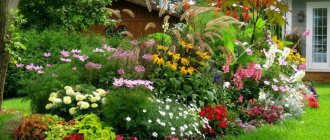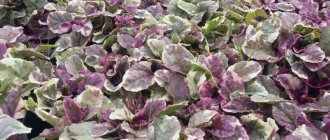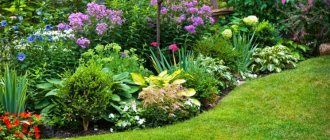There are a huge variety of wild plants in our world that can be beneficial to humans or cause harm, ranging from ordinary and minor injuries to death, if not treated promptly. Many of the plants that grow in the wild are used for medicinal purposes, and not only in folk medicine.
Poppy
Differences from cultivated species
Wild plants are unpretentious to the soil and do not require care. Wherever the seed falls, a sprout will appear, and over time a full-fledged specimen will grow. With cultivated plants, everything is more complicated, because they require careful care, they are very picky about the soil, the temperature around them, lighting and other factors that have to be constantly monitored. Among other things, it is much more difficult to get rid of wild crops, because they grow in massive quantities and try with all their might to dig their roots into the ground to avoid death.
Meadow daisy
Features of choosing plantings
It is difficult to imagine a well-kept garden or park area without beautiful flowering shrubs and trees. Such a landscape will be inexpressive and even repulsively dull. Properly selected vegetation makes the area lively and the landscape complete.
Many gardeners use ornamental shrubs to decorate their plots. Their popularity is constantly growing due to the excellent aesthetic properties of such plants. A well-designed landscape composition emphasizes the beauty of cultural plantings and the architecture of residential buildings. Wild shrubs, examples of which are given above, can become the basis for the design of a site.
Unlike cultivated plants, wild shrubs do not require special care and can thrive in difficult natural conditions.
The choice of a particular plant depends on the characteristics of the site, the climate of the area and the preferences of the owner. But at the same time, it must be attractive in appearance and maintain foliage throughout the spring-summer season or even the entire year. The crown of the plant must attract attention with its splendor and color palette.
But no matter what type of plant is chosen, it needs to be planted correctly so that there is enough space for normal development in a few years and the plant itself does not shade other flowers and trees. It is better to replant plants in late autumn or early spring. At this time, the root system is less injured and the degree of engraftment increases. These are the principles that must be followed when placing wild trees and shrubs on the site. Then the garden will soon turn into a favorite vacation spot, where the owners, as well as their friends and acquaintances, will be happy to visit.
Classification by life forms
Any plant species has many life forms and classifications in which they are described. But in our time, the lists of Serebryakov and Raunkier are considered the best and most recognized. Both scientists agreed that there are five main forms in the world, and all the rest are derivatives:
- Therophytes are plants without buds. They begin to wither and die towards the end of the flowering season. (Poppy seed, buckwheat, chamomile, etc.)
- Cryptophytes are shoots whose buds are located at a fairly large depth. (Potatoes, water lilies, lilies of the valley, tulips, etc.)
- Hemicryptophytes - the depth of the buds is shallow, usually equal to the ground or slightly lower. (Strawberries, dandelions, periwinkles, etc.)
- Chamephytes - the roots of these plants and their buds are located just above the ground and do not go deep. In winter they are covered with a small layer of snow. (Cranberries, lingonberries, blueberries, etc.)
- Phanerophytes - this form mainly includes trees, their buds are located high above the ground.
Thistle
How to properly move “wild animals” into the garden
- When adding wild plants to your garden collection, remember to use moderation and a sensible approach. Do not dig up huge bushes and tracts of plants: all “wild” plants reproduce easily, and you can increase the plantings with your own efforts without harming nature. Just a small seedling, a side sprout can easily turn into a clearing or rug. And young plants adapt more easily.
- Never touch protected crops listed in the Red Book: this is a crime that entails appropriate punishment.
- Dig up plants either in spring or early fall. You will not achieve success in carrying in the summer.
- Remember the conditions in which the plant grew and fully comply with the usual lighting conditions.
- Dig up crops with a large amount of soil, never shake off the soil and transfer them, along with the whole lump, to a new place. The more completely you preserve the rhizome, the better.
- Plants transferred from natural habitats need to be allocated a special place, preferably a separate composition with crops similar in requirements. Arrange a forest, field, meadow corner and fill it with those “wild animals” who will become real stars in it. If you don’t have enough space or time for a new object, then it’s better to add wild crops to landscape groups and natural areas, flower beds or garden beds, decorated in a natural style.
- After planting, provide frequent watering to help the new settlers adapt. Do not rush them with fertilizing; if necessary, shade them, protecting them from the bright sun.
- Be prepared for the fact that plants may have to be contained: many “wild” plants grow quickly in fertile soil and measures will be needed to prevent their excessive spread.
Edible plants
You should be careful when collecting wild plants, because instead of something harmless you may end up with a specimen that will poison a person. But there are quite a few edible species:
Snooze. Shrubs whose leaves are edible and somewhat similar in appearance to mint.
Snooze
Burdock. Young shoots are usually used, as old shoots lose their taste. The roots can be eaten in any form, whether raw or roasted. You should be careful with burdock, because in large quantities it can poison the body.
Burdock
Blooming Sally. The shoots are common throughout the CIS and can be eaten boiled. The roots are sweet, so they are often added to herbal teas instead of sugar.
Blooming Sally
Rogoz. It is rarely eaten, but still it is an edible plant. The rhizomes are suitable boiled or roasted.
Rogoz
Dandelion. The most common flower that everyone has seen. The leaves are bitter, so it is best to pour boiling water over them in advance.
Dandelion officinalis
Cuff. Shrub with edible foliage.
Cuff
Sagebrush. It is not usually used as a food, but can often be found in seasoning, as the leaves of wormwood have a peculiar bitterness.
Sagebrush
Wheatgrass. During the war it was a frequent snack for refugees. It can be eaten either raw or cooked.
Wheatgrass
Troll flower. It has poisonous roots that should never be consumed, but the young buds have a rather bright taste.
Troll flower
Licorice is naked. It has a sweetish and edible root.
Licorice naked
Goose foot. A plant, every part of which can be eaten, be it roots, shoots or leaves.
Goose foot
Shepherd's purse. It has edible leaves.
Shepherd's Purse
Common plantain. One of the most common specimens of the world fauna, it can be found in almost every cluster of shrubs. It is used in food as a seasoning, usually served with sorrel.
Common plantain
Sorrel. A flower known to everyone, the leaves of which can provide aroma and memorable taste to any dish.
Sorrel
Edible clover. Commonly used as a seasoning and also added to tea. It is very nutritious, so it is also added to soups.
Edible clover
Poisonous plants
Due to their prevalence and attractive appearance, quite a few poisonous plants can come across to an unknowing person on his way. Not everyone wants to understand what surrounds them, because of which they can not only get poisoned, but also die, because the poison of some wild plants is much worse than the poison of animals. The list is extensive, but you should familiarize yourself with each of its representatives:
Meadow parsnip. It is yellow in color and grows in the shape of an umbrella. The danger lies in the juice and finger, which contains substances that affect the skin. Psoralens, found inside the stems and on the buds of parsnips, increase sensitivity to sunlight, which can result in a lot of burns and blisters. The most dangerous period is considered to be the peak of flowering, which occurs at the end of summer.
meadow parsnip
Hogweed Sosnovsky. It is similar in appearance to dill, but is gigantic in size: its stems reach three or even four meters in height. The juice is no less dangerous than that of parsnips - it also deprives human skin of protection from sunlight. Burns of varying degrees and blisters appear on the affected areas, and you don’t have to be in the heat to get injuries; you just need to go out into the sun. Smaller specimens are considered harmless, and those that are similar in size to small shrubs 20-30 centimeters high are eaten. It is from this plant that the name of the favorite dish of many - borscht - comes from.
Hogweed Sosnovsky
Buttercup. Don't judge something based on its name or appearance alone. Buttercups are beautiful and catch the eye from afar, but their juice has a detrimental effect on the skin - it causes quite severe itching. If pollen from a flower gets into the throat, a person may develop a cough.
Buttercup
Dream-grass. People may call it a lumbago. It is similar in appearance to buttercup, but in its toxic properties it is also not very different from it - it also causes irritation, coughing and various inflammations.
Dream-grass
Poison oak. The foliage of such a plant is glossy, saturated with juice and attracts the attention of anyone who passes by. But poison oak itself is quite dangerous; its leaves contain urushiol oil, which causes severe consequences in allergy sufferers, including numbness.
poison oak
Delphinium. It is often called larkspur, but it usually occurs in rural areas. Another insidious plant belonging to the buttercup family. Its external characteristics do not remind it of its brother at all; rather, on the contrary, it is the complete opposite of any buttercup: the buds are blue or purple, the stems are oblong and their height can exceed the height of the average person. Contact with this flower has consequences similar to touching stinging nettle. Because of its beauty, it is also used as an ornamental plant, but working with it must be done with gloves and without the presence of children.
Delphinium
Ash tree or burning bush. Many inflorescences of beautiful shape and bright colors form a slender bush. Often ash is used as decoration for gardens. A distinctive feature from other shrubs is the release of essential oil in large quantities. This occurs mainly when the seed ripens. The ash tree received its second name precisely because of this property - by holding a match to the sprouts that are just breaking through the ground, you can see the air in the area flare up, although the individual itself is not scorched. Burning bush pollen can cause severe burns that only appear after a while.
Ash tree or burning bush
Castor bean. One of the key sources of castor oil. But in order to extract oil and not suffer from numerous toxins, the plant undergoes thorough steam treatment. Touching such shrubs will not have any consequences, but staying near untreated specimens for a long time contributes to the development of severe problems with the pulmonary tract. In extreme cases, a person may die.
Castor bean
Five leaf grapes. A fairly common type of wild grape that is found near dachas or villages. It is also called girlish. It is not suitable for consumption, since the taste immediately indicates potential danger. You won’t be able to get poisoned by just a couple of berries, but eating a few handfuls can cause inflammation of the larynx.
Five leaf grapes
Buckthorn is brittle. It is most often found in the forest and is similar to bird cherry, so special attention should be paid to wild forest plants, because completely harmless species have many poisonous counterparts.
Buckthorn brittle
Wild shrubs of our country
The nature of our vast homeland amazes with its diversity and grandeur. The number of plant species growing in our country is so large that just listing their names would require dozens of sheets of paper. In all regions of the country you can find deciduous and coniferous forests, hills and mountain ranges covered with greenery.
Among these flora representatives there are many plants used to create the landscape of suburban areas. The most common species are the following wild shrubs:
- hawthorn;
- spirea;
- honeysuckle;
- hazel;
- raspberries;
- lilac;
- rosehip and others.
All wild shrubs in our region have their own properties and characteristics. Many of them bloom beautifully and produce delicious berries. A number of species have only decorative properties.
Designers often choose shrubs and trees that are common in this region for their work. In new conditions, plants can be the center of the entire composition.
These representatives include:
- bird cherry;
- currant;
- thuja;
- pine and many others.
Benefit for health
It would seem that in the current realities there are cures for most diseases, artificial vitamins that replace natural ones, many ways to abstract ourselves and stop being dependent on supplies of wild plants. In addition, breeders have bred many ornamental and medicinal species, which means turning to wild nature is no longer so necessary? This is partly true, but without many wild plants it was impossible to reach the current level of medicine. The main and most common plants for treatment are:
- Plantain. It grows literally everywhere, from yards to roads. It breaks through asphalt and tiles, and sprouts where it is not at all welcome. But plantain is considered the most readily available and easy-to-use remedy for healing cuts, bruises and other minor wounds.
- Dandelion. Yes, it would seem, it’s just a yellow flower that everyone has been tired of for a long time. But in folk medicine it is still considered almost the “elixir of life.” Dandelion roots are an indispensable ingredient for the production of blood purifying medicines. It also copes very well with jaundice and insomnia.
- Nettle. A weed that is common and already boring to every person, be it a resident of a city or a small village. It grows everywhere. People immediately pull out nettles along with the roots, but they don’t even think that this particular weed is rich in carotonin and vitamin C. Just like dandelion, it promotes better blood purification and can help with anemia and liver diseases. Treatment of skin diseases also involves the use of nettle.
Nettle
Feather grass fluffy cloud
Feather grass fluffy cloud is a steppe unpretentious plant that, when growing, turns into original silky bushes; during flowering, the tips of the bush become pink or golden.
Another unusually beautiful variety of cultivated feather grass, “the most beautiful,” has the thinnest stems covered with transparent fluff.











